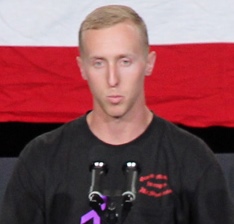In researching another story indirectly related to the deaths of the 19 members of the Granite Mountain Hotshots June 30, 2013 on the Yarnell Hill Fire near Prescott, Arizona, I ran across an interesting article about how a father tracked his son who was one of the 19.
Using a smart phone application called “Find My Friends”, Joe Woyjeck who works for the Los Angeles County Fire Department, could see the location of his son, Kevin Woyjeck, when he went on fires across the West with the Hotshot crew.
Below is an excerpt from the article at AZCentral, published June 28, 2014:
****
“…In mid-June, Joe tracked his son as the Granite Mountain crew headed to Jemez Springs, N.M., for the Thompson Ridge fire. He knew when Kevin was done and headed back to Arizona. “I could track him on the road,” Joe said.
The Granite Mountain crew stayed around Prescott the next few weeks, fighting the Doce and West Spruce fires. Then, they were sent about 30 miles southeast to battle a fire initially sparked by a lightning strike on a hill.
On the morning of June 30, Joe Woyjeck was playing with his dog in the front yard of his Southern California home.
He clicked on his phone. An icon representing his son popped up on a map. The phone said he was somewhere outside the community of Yarnell.
Later on, Joe would regret that he didn’t save a screen shot of that map. But at that moment, he didn’t know he would have a reason to do so. He was just taking a peek, as the two always did.
It would be hours later that Joe’s phone would ring. It was his other son, Bobby. He had heard bad news from a friend of his, who was a firefighter in Arizona. Something bad had happened in Yarnell.
Joe made a call to the Prescott Fire Department. “I’m sure they were getting overwhelmed,” he said. He got through to a woman who told him she couldn’t say anything. Joe pressed her. “Was there a burn-over?” he asked. She said yes. Joe said that was all he needed to know.
Joe tried calling his son. But got no response.
He then tried the “Find My Friends” program. Nothing showed.
[…]
Sometime that evening, the fire chief and a fire captain from the Orange County Fire Authority came to the door. Joe didn’t know either man. But he knew what they were there to say.
He was in shock but said he was able to use his professional experience to temporarily distance himself from the situation. He opened the door and saw the two men in their dress uniforms.
He told them who he was and said, “Confirmed?”
One man said, “Confirmed.” Joe shook both men’s hands.
[…]
He read reports that said commanders were not sure where the Granite Mountain crew was. He thinks of that June 2013 morning and how he so easily could look at his phone and see his son’s location.
“It’s really hard for me to understand how they didn’t know where the crews were at,” he said, “when I’m playing with my dog on my front lawn and I know where my son is, all the way in Southern California.”
The Fire Department would later send Joe his son’s belongings, including the burned remnants of his phone.”




